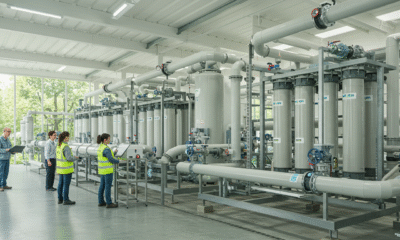

Environment
Implementing Sustainable Practices in Quick Service Restaurants
According to the European Union Climate Change Copernicus Service (CS3), the highest global mean temperature was recorded at 1.46°C above the 1850-1900 pre-industrial average. This observation was made from January to November 2023. The number is 0.13°C higher than the eleven-month average for 2016—the warmest calendar year on record.
The increasing temperature underscores the significance of implementing sustainable practices across various sectors, including the restaurant industry. These are just some of the many ways that climate change is affecting our lives. Since more consumers are promoting environmental consciousness, implementing sustainable practices is necessary to ensure business profitability and survivability, even for quick-service restaurants (QSR).
Sustainable Practices To Implement in QSR
By implementing sustainable business practices, QSRs can show customers that they care about the environment and want to help in the global effort to reduce waste. To help QSR operators in this effort, we outline the most effective sustainable practices to implement within their businesses.
Use sustainable food packaging
There are three kinds of sustainable food packaging that you can use for your restaurant: recyclable, biodegradable, and reusable.
- Recyclable packaging is single-use packaging that you can send to recycling centers after use. At the center, they turn it into a new product. When using recyclable packaging, you must place recycling bins in your restaurant that are accessible to patrons and employees.
- Using biodegradable packaging is one of the most popular sustainable practices among modern restaurants. This single-use packaging will decompose in a few days to a few months. Made of plant waste, they are a popular choice for packaging in the food industry.
- Reusable packaging can be made of glass, aluminum, wood, bamboo, or recycled plastic. Because it is durable, you can use it for years. You can encourage customers to bring reusable containers to help save the planet.
Once you start using sustainable food packaging, announce the switch on your website or social media accounts to inform your customers. Making the announcement publicizes your campaigns and allows customers to support your efforts by bringing their reusable containers.
Try energy-efficient tools
Electric power is the second-largest contributor to greenhouse gas emissions in the US. By investing in energy-efficient or environment-friendly appliances, you can use less energy and help in the effort to reduce emissions.
For example, traditional point-of-sale (POS) platforms should be upgraded if you want to reduce paper waste. You can use modern quick-service POS systems that generate digital receipts to minimize energy consumption. This approach can significantly reduce paper consumption while streamlining customer transactions.
Provide healthy menu options
You can promote sustainability by considering what you offer in your restaurant’s menu. By providing customers with healthy options and using organic produce, you can help lower your company’s carbon footprint.
Consider implementing the following practices:
- Buy ingredients locally and use them seasonally
- Lessen the use of added sugar
- Offer healthy alternatives to customer-favorite food items
- Label the ingredients on meals and their source, if possible
- Serve seafood dishes
- Provide less processed foods
- Include nuts and legumes
- Ditch potatoes and use sweet potatoes instead
- Try plant oils
- Consider good fats
- Offer customers dairy replacements
Reduce food waste
The agriculture industry is one of the significant contributors to the climate crisis, mainly due to releasing carbon into the atmosphere. Reducing food waste at your restaurant can lower your contribution to emissions.
Try to use up your inventory instead of letting ingredients go to waste. By properly managing your company’s inventory, you can avoid overbuying ingredients.
You can use inventory management tools to keep track of what you have in stock so that you only buy what you need. This approach is not only good for the environment but can also lower your inventory costs.
You can implement these simple practices at your QSR to help the environment. With these pointers, you can contribute to the global effort of keeping the environment safe.


 Environment10 months ago
Environment10 months agoAre Polymer Banknotes: an Eco-Friendly Trend or a Groundswell?

 Environment11 months ago
Environment11 months agoEco-Friendly Home Improvements: Top 7 Upgrades for 2025

 Features9 months ago
Features9 months agoEco-Friendly Cryptocurrencies: Sustainable Investment Choices

 Features10 months ago
Features10 months agoEco-Friendly Crypto Traders Must Find the Right Exchange





























